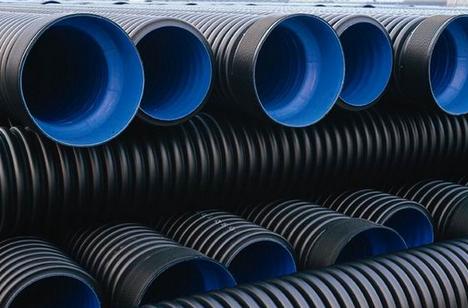Dec . 09, 2024 18:21 Back to list
40mm PPR Pipe for Reliable Plumbing Solutions and Efficient Water Management
Understanding PPR Pipes A Focus on 40mm Service Applications
PPR pipes, also known as Polypropylene Random Copolymer pipes, have gained immense popularity in various plumbing and industrial applications due to their durability, resistance to corrosion, and overall efficiency. This article will delve into PPR pipes with a specific focus on 40mm service applications, exploring their benefits, uses, and installation techniques.
What are PPR Pipes?
PPR pipes are made from a type of thermoplastic polymer, specifically polypropylene. This material is known for its excellent chemical resistance and ability to withstand high temperatures, making PPR pipes suitable for hot and cold water supply lines. The unique construction of PPR pipes involves a random copolymer structure, which enhances their flexibility and resistance to stress cracking.
Benefits of Using PPR Pipes
1. Corrosion Resistance Unlike traditional metal pipes, PPR pipes do not rust or corrode, extending their lifespan significantly. This property makes them an excellent choice for various applications, from residential plumbing to industrial systems.
2. Thermal Insulation PPR pipes offer better thermal insulation compared to metallic pipes. This characteristic minimizes energy loss in hot water systems, contributing to energy efficiency and lower utility bills.
3. Lightweight and Easy to Handle One of the significant advantages of PPR pipes is their lightweight nature, which simplifies handling and installation. This feature is particularly beneficial in large-scale projects where heavy materials could complicate logistics.
4. Joint Integrity PPR pipes are typically joined using heat fusion techniques, which create strong, leak-free joints. This method not only ensures a permanent bond but also enhances the overall integrity of the plumbing system.
5. Low Water Flow Resistance The smooth internal surface of PPR pipes reduces friction, allowing for better water flow rates. This quality is essential in various applications, including irrigation systems and heating networks.
Applications of 40mm PPR Pipes
The 40mm diameter PPR pipe is a versatile size, suitable for numerous applications. Here are some common uses
ppr pipe 40mm service

1. Residential Plumbing Many households utilize 40mm PPR pipes for water supply and distribution systems. Their ability to handle both hot and cold water makes them an ideal choice for kitchens, bathrooms, and laundry areas.
2. Industrial Applications PPR pipes are extensively used in industrial settings, particularly in chemical transport and processing. Their resistance to various chemicals and high temperatures makes them suitable for such critical applications.
3. Irrigation Systems The agricultural sector benefits from PPR pipes, especially the 40mm variant, for efficient irrigation systems. Their ability to carry water under varying pressures without risk of corrosion is advantageous for farmers.
4. Heating Systems PPR pipes are also commonly used in heating systems, including underfloor heating and radiator connections. The thermal efficiency and resistance to high temperatures make them a reliable choice.
Installation Considerations
Installing 40mm PPR pipes requires careful planning and execution to ensure optimal performance
1. Cutting and Joining When cutting PPR pipes, it is essential to use a suitable cutting tool to ensure a clean cut. This practice helps in creating a precise joint during the heat fusion process.
2. Proper Fusion Technique To achieve a strong joint, it's crucial to follow the manufacturer's guidelines for temperature and timing during the heat fusion process. Mistakes can lead to weak joints that may fail over time.
3. Support and Support Spacing Adequate support must be provided to prevent sagging and movement of the pipes, which could lead to stress and potential failure. The spacing of supports will depend on the specific installation conditions and local building codes.
Conclusion
PPR pipes, particularly the 40mm variety, represent a forward-thinking solution for modern plumbing, irrigation, and industrial applications. Their numerous advantages, including corrosion resistance, ease of installation, and energy efficiency, make them a preferred choice for many engineers and contractors. As the demand for sustainable and reliable piping solutions continues to grow, PPR pipes are likely to remain at the forefront of plumbing technology. Whether for residential use or large-scale industrial applications, the versatility and performance of PPR pipes ensure they will play a crucial role in the future of pipe systems.
-
High-Quality PVC Borehole Pipes Durable & Versatile Pipe Solutions
NewsJul.08,2025
-
High-Quality PVC Perforated Pipes for Efficient Drainage Leading Manufacturers & Factories
NewsJul.08,2025
-
High-Quality PVC Borehole Pipes Durable Pipe Solutions by Leading Manufacturer
NewsJul.08,2025
-
High-Quality PVC Borehole Pipes Reliable PVC Pipe Manufacturer Solutions
NewsJul.07,2025
-
High-Quality UPVC Drain Pipes Durable HDPE & Drain Pipe Solutions
NewsJul.07,2025
-
High-Quality Conduit Pipes & HDPE Conduit Fittings Manufacturer Reliable Factory Supply
NewsJul.06,2025

